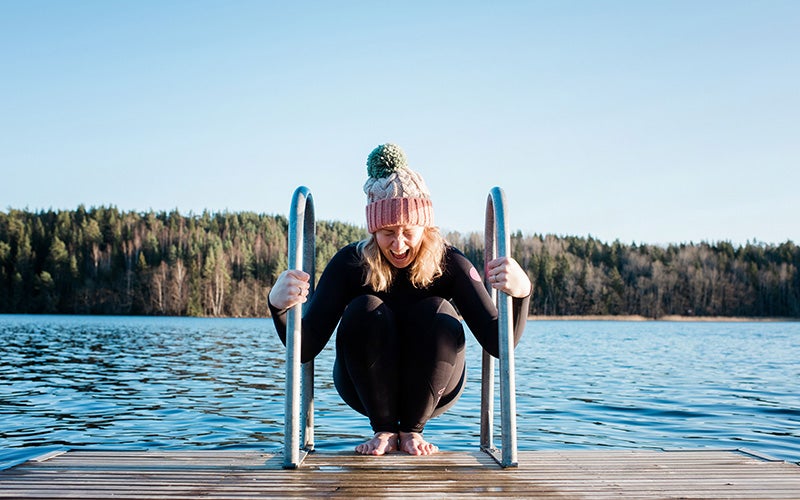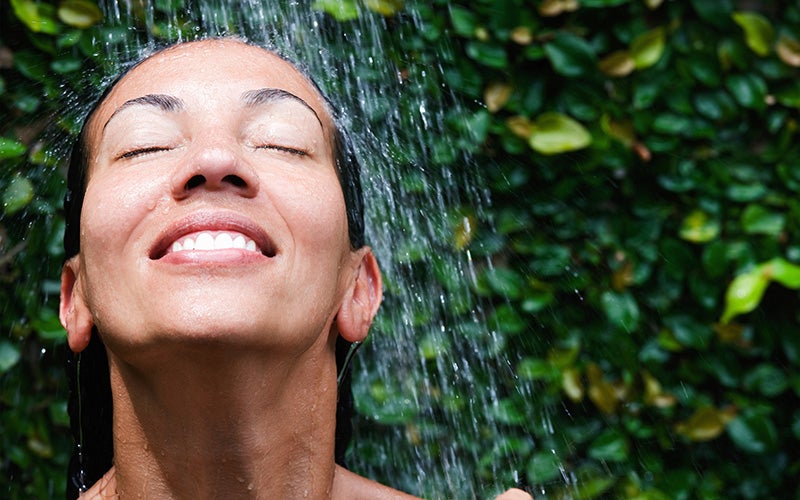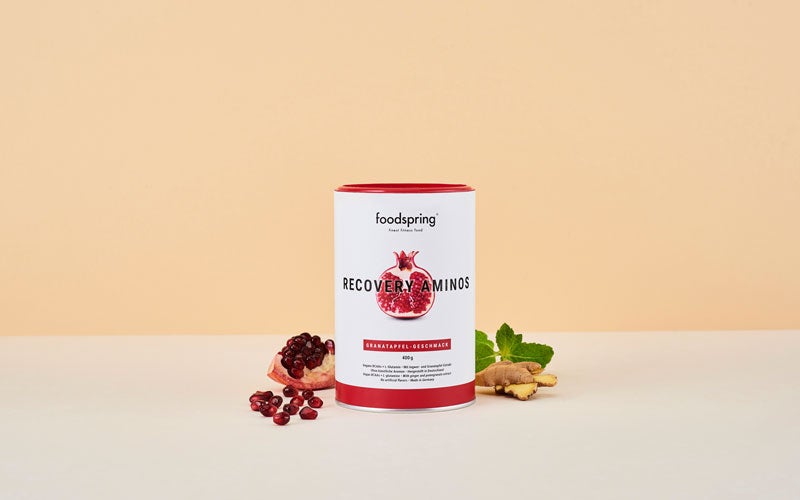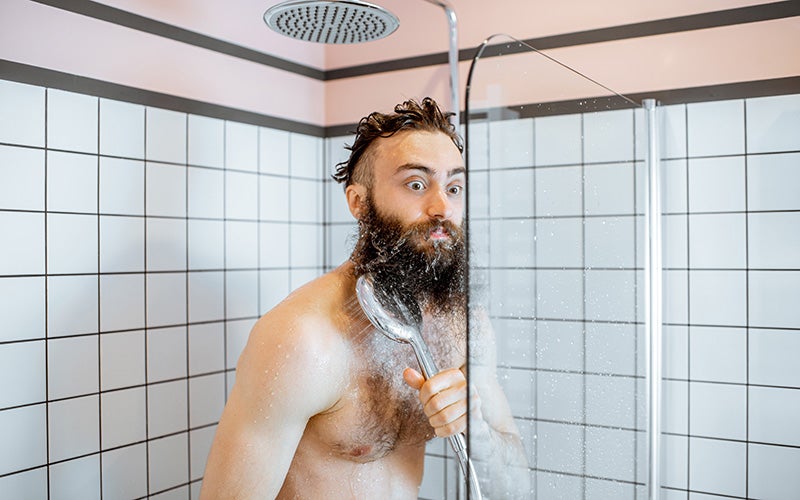Is cold thermogenesis your secret weapon for health?
 ©Cavan Images
©Cavan Images
With its intense sensations and surprising results, cold thermogenesis has been hyped up among athletes for a while now. Cold showers are supposed to promote muscle recovery, improve immune response, and even help with weight loss. Let’s find out what’s behind this trend, if cold exposure is really healthy, and how this cold kick can help you get ahead.
What is Cold Thermogenesis?
The process by which your body generates heat is called thermogenesis, add cold conditions and you get cold thermogenesis. When the body is exposed to cold, it accelerates various metabolic processes, such as energy creation, fat burning, digestion, and muscle activity. Heat is produced as a by-product that ensures your body’s survival. After all, your body’s goal is to be ready to fight at any time, or to be able to flee from a mammoth, even in freezing cold.
A more contemporary example: You’re waiting for the train in the depths of winter and start shivering from the cold. These muscle contractions serve as protection, preventing you from freezing to death by raising your body temperature from the inside.

Now many athletes also take advantage of this principle with a cold shower or an ice bath.
What Are the Effects of Cold Exposure?
A cold shower in the morning may sound horrible to you, but some people swear by this fresh kick. Is it really worth the jitters? These are its effects according to the science:
1. Cold showers wake you up
Taking a shower with cold water takes some training. But those of you who’ve already dared to try it know: you do feel refreshed afterwards. Various studies (1) have confirmed the physiological effects of cold thermogenesis: Exposing yourself to sudden cold raises your blood pressure, breath rate, and pulse. Your body is put on high alert, which means, after a bit of cold therapy, you can start the day mentally fitter, with more concentration.

2. Cold thermogenesis increases the calories you burn
Your core temperature is around 37 degrees, and your body will pull out all the stops to maintain this temperature – whether you’re in a hot or cold environment. As you can imagine, jumping into ice baths takes a lot out of your body. One side effect of the exposure: Your fat metabolism is stimulated after just 30 seconds under a cold jet of water. According to some studies (2), this increases the amount of calories your burn per day by an average of 3 percent. If you want to lose weight, you’ll need to burn a few more calories to add up to a reasonable deficit, but it’s still a good place to start.
3. Cold exposure stimulates your body fat metabolism

Cold temperatures have been shown to activate (3) so-called brown fat in your adipose tissue. Unlike the white fat cells, brown fat cells convert this stored energy into heat and burn fat instead of keeping it around in white adipose tissue. So the more often you take the plunge, the more your brown fat will get to work reducing your body fat levels.
Just showering by itself won’t get you anywhere, of course. If fat burning is your goal, focus on regular strength training to build muscle mass as well!
4. Cold boosts your mental strength
Scientists (4) have found that regular cold showers can provide relief to patients with depression. In this case, cold thermogenesis acts as a natural mood enhancer. Why? Low temperatures activate parts of the nervous system. Among other things, the hormones norepinephrine and beta-endorphin are released. These neurotransmitters help you build resilience, feel stronger mentally, and lift your mood.
5. Cold strengthens the immune system
According to one study (5), people who regularly take cold showers are less likely to call in sick to work. Scientists suggest that the cold improves immune response because blood circulation is stimulated, so your organs are regularly supplied with important nutrients. In addition, the body releases more white blood cells to fight viruses and bacteria, squashing budding infections in their tracks.
6. Cold helps with recovery
Cold thermogenesis works particularly well for athletes because studies (6) show that cold therapy can promote muscle recovery and increase performance.
So it makes sense that professional athletes regularly go for ice baths after training. As part of the heat production, blood circulates faster through your body and can remove by-products such as lactate more quickly. All this means that you’ll feel recovered and ready for your next workout in a shorter amount of time.
Tip: Give your body some additional support with our proven Recovery Aminos. This post-workout drink combines L-glutamine and high-quality BCAAs – the perfect duo for muscle recovery.

Check out our Recovery Aminos now
7. Cold exposure can relieve pain.
In a study scientists (7) found that the use of cold water can reduce pain. Under the influence of low temperatures, your blood circulation is increased. As a result, swelling or inflammation can go down more quickly. In addition, cold therapy can slow down the nerve signals sent to the brain, so it dulls your perception of the pain. No wonder the first thing people turn to for injuries or muscle soreness is a soothing cold pack!
Cold Showers: Advantages and Disadvantages
The benefits of cold thermogenesis speak for themselves. But is cold therapy for everyone? Here are the advantages and disadvantages at a glance:
©Philipp Nemenz
| Advantages of cold thermogenesis | Disadvantages of cold thermogenesis |
|
|
Anyone with a cold, fever, immune deficiency, cardiovascular issue, urinary tract infection, asthma, or other illness should stay away from cold exposure. If in doubt, always consult your doctor first!
The cold shock can put unnecessary strain on an already weakened body. The same applies to people suffering from chronic stress because stimulating the stress hormone norepinephrine can be counterproductive for them.
In summary, cold thermogenesis work is not a panacea, but it can definitely help healthy people get ahead. Are you ready to take the plunge?
Practical Tips
Literally jumping into cold baths or the ice, like followers of the Wim Hof Method, is only recommended for those with some experience. Beginners are better off starting in the shower.
It’s important not to stress your body by going from 0 to 100 in 6 seconds flat. Rather, get yourself used to the cold step by step. Taking a cold shower is like working on squats: Slight shivering is fine, collapsing is not.

Tip: Before you get under an ice-cold shower, try a face bath first. Splash fresh, cold water over your face and neck in the morning. If that’s a breeze for you, you can move on to greater exposure to cold.
Follow these instructions to optimize your cold shower:
- Warm Phase 1: Start with lukewarm water and shower with it from head to toe for one to two minutes.
- Cold Phase: Turn on the cold water. A temperature of 10 to 16 degrees Celsius is a good range. Start with a 10- to 20-second “knee shower” by holding the showerhead to the insides of your legs. Work your way up slowly from day to day: Glutes, torso, then your arms. The cold phase should last no more than three minutes.
- Warm Phase 2: After the cold shower, make sure you warm up quickly. The room should be preheated for this purpose. Dry yourself completely, get dressed immediately, and move around to keep your circulation going.
If your extremities become extremely pale or turn bluish, stop the cold shower immediately. The same applies to excessive shivering, dizziness or general malaise. Observe your body closely and listen to its signals, so you can reap the health benefits of cold thermogenesis.
Conclusion
- In cold thermogenesis, the body produces heat while exposed to cold temperatures, which, in turn, triggers various metabolic processes.
- Its benefits include a stronger immune system, increased mental strength and performance, fat loss, faster recovery, pain reduction, and increased stress tolerance.
- The body should be trained gradually, so don’t literally jump in right away.
- It can be a burden on the body, so only healthy people should try it on their own. If you have any pre-existing condition, consult a doctor before beginning this type of treatment.
Sources for this article
We at foodspring use only high-quality sources, including peer-reviewed studies, to support the facts within our articles. Read our editorial policy to learn more about how we fact-check and keep our content accurate, reliable, and trustworthy.
- (1) https://bjsm.bmj.com/content/44/3/179
- (2) https://pubmed.ncbi.nlm.nih.gov/18335051/
- (3) https://pubmed.ncbi.nlm.nih.gov/19357405/
- (4)https://www.researchgate.net/publication/5854059_Adapted_cold_shower_as_a_potential_treatment_for_depression
- (5) https://www.ncbi.nlm.nih.gov/pmc/articles/PMC5025014/
- (6) https://journals.lww.com/nsca-jscr/Fulltext/2017/05000/Effects_of_Cold_Water_Immersion_and_Contrast_Water.32.aspx
- (7) https://www.ncbi.nlm.nih.gov/pmc/articles/PMC4049052/






























